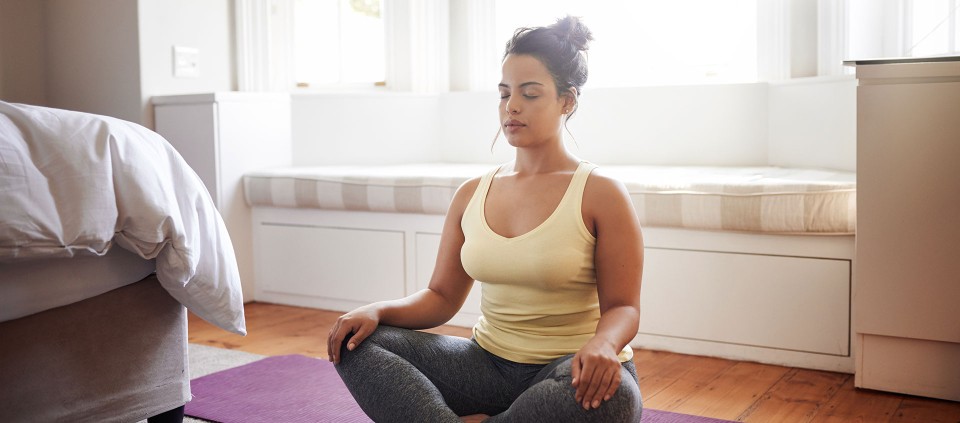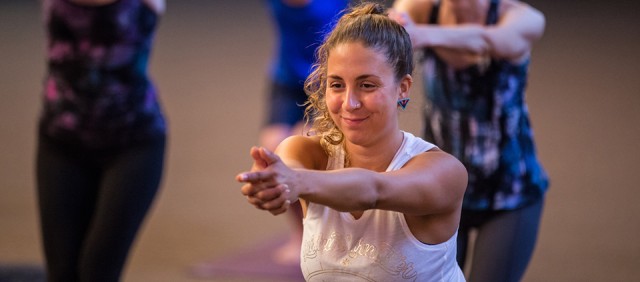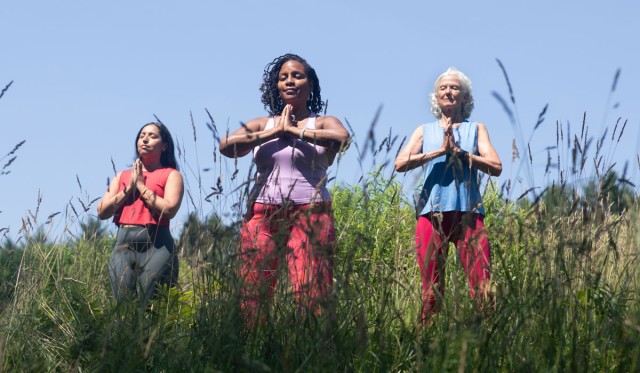Yoga Without a Teacher: Why Self-Guided Practice Is So Important

I remember the first time I rolled out a sticky mat and tried to do yoga at home on my own. It was awkward. I had postures listed on a piece of paper that I referred to, but I didn’t exactly flow through them. I doubt I even took a breath. My practice wasn’t skilled or elegant.
I went to class once a week, because that was what was available in my area. But I knew I needed more, and in pre–yoga boom era, when there was no yoga instruction available online or on DVDs, all I had was a piece of paper and a blue sticky mat. I had to be my own guide.
Over time, I grew more skilled; I learned more postures and pranayama techniques, got better at being still in Savasana, and became more comfortable sitting in meditation. I began to understand and know myself in a new way. I found ease inside.
We live in an exciting time for those who want to practice yoga. Asana classes are available in places where, 10 years ago, you could never have found them. There are classes at gyms and fitness centers, and we have plethora of choices on DVD or streaming. Not only asana, but meditation and pranayama can also be found online or in classes. That’s how most people first experience yoga. It’s not a bad thing—but by circumventing a self-guided personal practice, are we missing out on an important opportunity?
The Benefits of Self-Guided Practice
Swami Kripalu said, “To practice even a little is of the utmost importance. The profound meaning of yoga is only understood by those who study it systematically through personal practice.”
Personal practice supports you experiencing the postures at your own pace and not your teacher’s. You learn for yourself what works for your body and what doesn’t, what’s open and what needs more coaxing. Without a teacher moving the class along, you may be inclined to find new ways to explore and feel a posture. You can pause and slow down where you need to, and learn to follow prana where it takes you. In the process, you strengthen the muscle of svadhyaya, self-study.
When you do find yourself in a yoga class after establishing a personal practice, it usually changes the way you show up. Having your own practice allows you to be more confident and at ease in class, to feel less pressure and competitiveness. The teacher becomes a guide offering an invitation, rather than an authority who knows you better than you do. The yoga experience was never meant to be a game of Simon Says.
The Multiple Experiences Offered by a Well-Rounded Practice
Does having a self-guided personal practice mean that we never go to yoga classes or use recorded guides? Absolutely not! Classes provide inspiration, learning, connection, and the gifts of sangha (yoga community). Recorded classes allow us to stay connected to our favorite teachers. I’m grateful for my DVDs, as they allow me to bring my teachers home. Rather than practicing just one way, we can bring what we learn from classes and media into our personal practice—and vice versa—as we experiment and learn.
In Kripalu Yoga classes, we leave space for students to explore on their own, so they can acknowledge and honor what is arising in their body-mind. People need to be offered an opportunity to check in with themselves, feel what they feel, notice what they notice. Checking in helps us observe the effects of yoga in the moment.
Many students are befuddled by this. Sometimes it’s because they’re new to Kripalu Yoga, but often they have never been given this latitude in a class, and aren’t familiar with self-guided experience. Their relationship with yoga has always been through a teacher in a class.
But when we practice on our own, whether it be asana, pranayama, meditation, or all three, we’re giving ourselves a great gift and a great opportunity. There’s a saying that how you show up when you’re alone is who you truly are. By yourself on a yoga mat is a perfect place to discover who you truly are. A teacher can only guide us so far; we have to be willing to journey by ourselves as well.
Launching a Self-Guided Practice
If you’re not used to practicing on your own, it can feel daunting at first, especially if you’re used to being guided. Here are a few tips for getting started.
- Find a space and time in your home where you can practice without interruption. It’s easier if you can have a designated place for practice, and not everyone has that luxury. Move the coffee table, practice in the kitchen—work with what you have.
- Write down the flow you’d like to practice, beginning with a short centering, just like in a yoga class. Remember, you are offering a class to yourself, so give yourself the full benefit of everything you’d get in a class: pranayama, asana, and meditation.
- Set a timer and commit to that time on the mat. Use this personal practice time to connect to your heart, to feel your emotions and watch your thoughts. Notice if you become distracted and feel an impulse to leave your practice to check a text or email, look at the window, or do the dishes.
- Always leave time at the end for silence and stillness. Savasana is an opportunity for integration and healing—don’t miss it.
Remember, “to practice even a little is of utmost importance.” You don’t need tons of time, but you need to use it wisely. Honor the time that you are choosing to spend with yourself on your mat. You’re worth it.
Cristie Newhart, former Dean of the Kripalu School of Yoga, is a dynamic yoga teacher who imbues her classes with meditative inquiry, detailed alignment principles, and playful humor.
Full Bio and Programs
